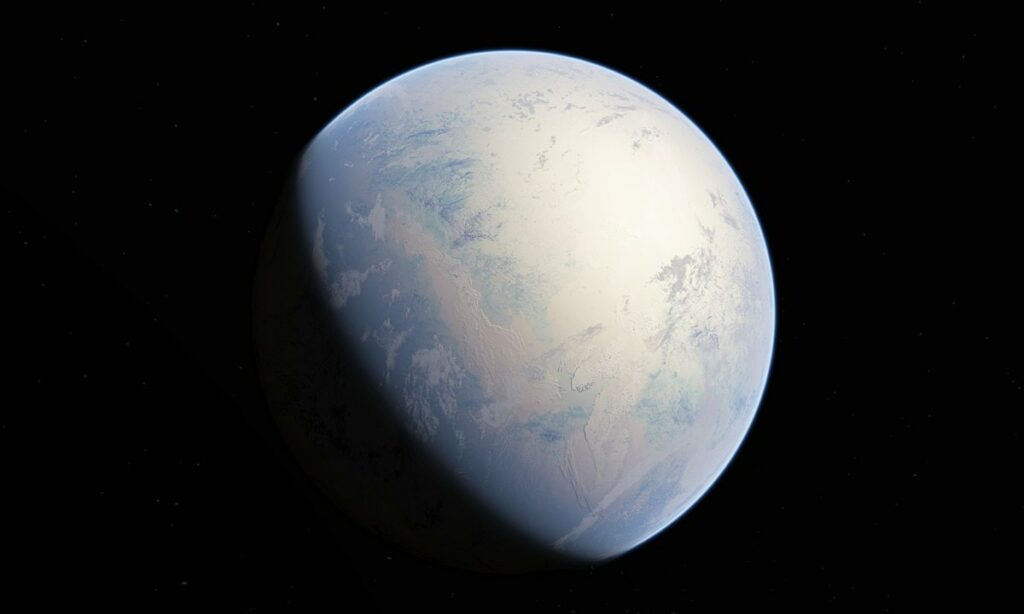Editor’s note: Guest columnist Barry Zellen is back with a multiple-part series about how the Arctic region was formed from the Ice Ages to today.
Editor’s note: Guest columnist Barry Zellen is back with a multiple-part series about how the Arctic region was formed from the Ice Ages to today.
In this series of articles, I will extend our time horizon for Arctic geopolitics – which is often contextualized by the Cold War (1945-90) and World War II (1933-45), and occasionally by the 1867 Alaska Purchase that made the United States an Arctic state (and in the same year, the British North America Act that positioned Canada as an independent Arctic state as well).
Much, much further back in the mists of time.
Indeed, we’ll journey over 600 million years back for a deeper examination of the interplay of geology, climate, biology and later humanity to illuminate our understanding of Arctic geopolitics across the eons. Our deep dive across such a vast sweep of time finds the Arctic at the geostrategic center of the world time and again, perhaps Earth’s first and most enduring geographical pivot – with the Arctic central to deep geological, prehistoric Ice Age, medieval Viking, and contemporary worlds, serving as a bridge between continents and cultures (called the “stepping stones of giants” according to Aleut legend), whether being part of a geopolitical Rimland, Heartland, and/or isolated Lenaland.
Our starting point begins when all the world is believed to have been entombed in ice during the Precambrian Cryogenian period, the period known as Snowball Earth that is understood, upon its ultimate thaw, to have been triggered by the proliferation of multicellular life on Earth.
Next, we fast-forward to a more recent time (relative to Snowball Earth), one still far back compared to the most timeframes that inform our understanding of Arctic geopolitics: the Last Glacial Maximum (LGM) of the Pleistocene, some 20,000 years ago (in a range from around 23,000-19,000 years ago), during which waves of migrating humans found their way to and/or through the Arctic in quest of new hunting and/or fishing territories, whether for prehistoric big game like wooly mammoths to smaller marine mammals and fishes.
Their routes were, quite plausibly, varied – the most popular, and first to gain wide acceptance, being by foot along the coastal lowlands of the Bering Land Bridge that formed a land corridor traversing Beringia some 14,000 years ago. But archaeologists, finding evidence (in the form fossilized of human footprints) of an earlier arrival, postulate a use of the more northeasterly and earlier-accessible Mammoth Steppe route through what is now northern Alaska, Yukon and southwestern NWT) into today’s prairie provinces and plains states; and/or a Pacific maritime crossing (along what has been dubbed the “Fertile Shore,” “Kelp Highway,” or more simply “Coastal” route) adjacent to Beringia, and accessible both before its land bridge opened (an opening that is believed to have lasted some 5,000 years), and after it was inevitably flooded by melting glaciers after the LGM concluded, some 13,000-11,000 years ago.
More controversial and with less scientific evidence is the “Solutrean Hypothesis” (think of it as a “Make Prehistory Great Again” counter-narrative) across the North Atlantic’s “Icy Crescent,” a largely hypothetical, alternative prehistoric Atlantic maritime crossing a migration path skirting the icy coasts of the that link northern Europe to the Americas through what is now Iceland, Greenland, Labrador and Newfoundland, and that would again, many millennia later, transport seafaring medieval Vikings to North America (the very path some feared might entice invading Nazis to North America in World War II, particularly after Imperial Japan occupied the Outer Aleutian Islands at the outset of World War II along the ancient maritime route adjacent to Beringia, a prelude to yet another invasion that might have, but in the end did not, transpire.)
Whether by land through Beringia or along the more northern Mammoth Steppe, or by sea across the Pacific’s Kelp Highway (along the Fertile Coast) or the Atlantic’s Icy Coast this multiplicity of migration routes and its extended waves of human migration had profound impacts on the Americas, which had as yet remained unpeopled, and with wildlife yet unharvested. Though prehistoric, the geopolitical consequences of this dynamic utilization of the Arctic as a strategic pivot through which humanity flowed, were profound – and indicative of the future geopolitical significance of the Arctic.
A half-millennium after the Vikings braved the North Atlantic’s Icy Coast, in the colonial period, commercial enterprises rooted in European capitals voyaged to/through the Arctic in quest of marine mammals, setting up shop in what became lightly settled Fur Empires such as the Russian-American Company (seeking to satisfy China’s seemingly insatiable appetite for sea otter pelts) and the Hudson’s Bay and Northwest Companies (seeking to satisfy Europe’s equally insatiable appetite for beaver pelts), while commercial whalers sought precious whale oil to illuminate expanding cities as globalization began to vigorously integrate the Arctic’s resource frontiers with European markets – decimating ecosystems and endangering otherwise sustainable Indigenous subsistence.
And in our own time, anthropogenic climate change is fast opening up even more of the Arctic to contemporary natural resource exploration, and in time the long-isolated marine sanctuary afforded by Central Arctic Ocean’s once permanent ice cover will be at risk, suggesting a final chapter in this long story of Arctic globalization that dates back 20,000 years.
Source link : http://www.bing.com/news/apiclick.aspx?ref=FexRss&aid=&tid=66eecffb7e1a40e58b716a11144536e4&url=https%3A%2F%2Fwww.nnsl.com%2Fhome%2Fcold-wars-600-million-years-of-arctic-geopolitics-from-snowball-earth-to-the-anthropocene-7545091&c=9125556964526127591&mkt=en-us
Author :
Publish date : 2024-09-21 01:57:00
Copyright for syndicated content belongs to the linked Source.
